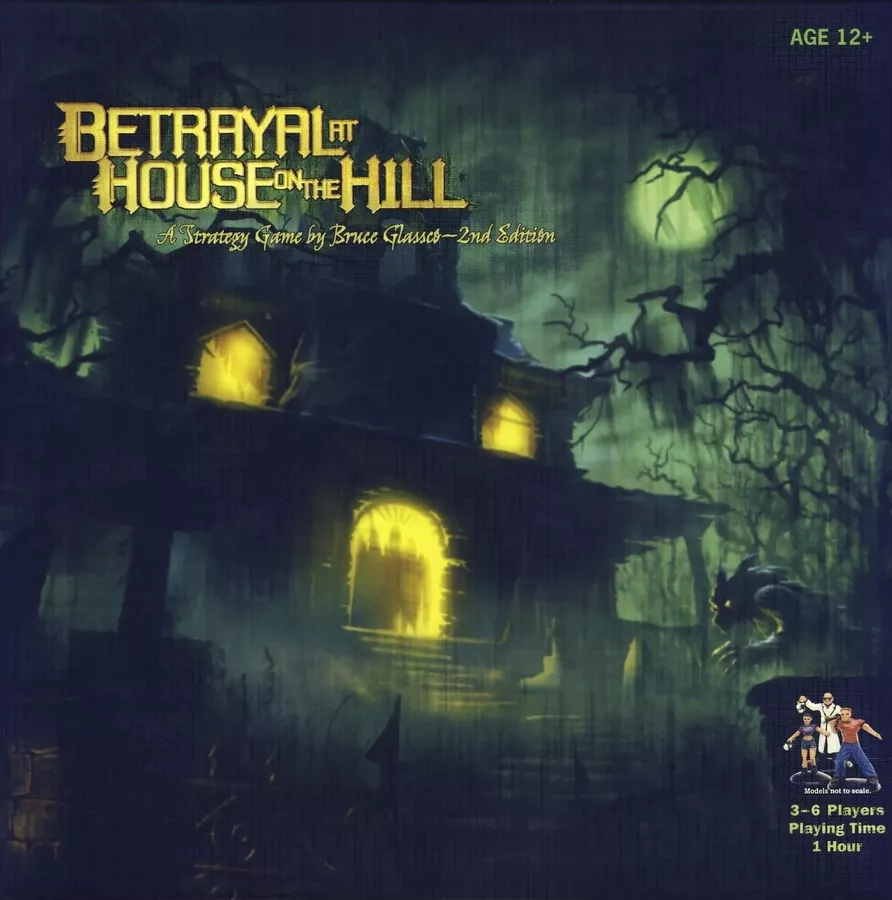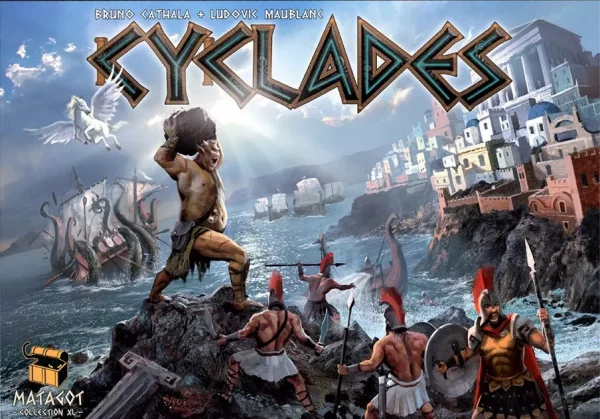Betrayal at House on the Hill quickly builds suspense and excitement as players explore a haunted mansion of their own design, encountering spirits and frightening omens that foretell their fate. With an estimated one hour playing time, Betrayal at House on the Hill is ideal for parties, family gatherings or casual fun with friends.
Betrayal at House on the Hill is a tile game that allows players to build their own haunted house room by room, tile by tile, creating a new thrilling game board every time. The game is designed for three to six people, each of whom plays one of six possible characters. Secretly, one of the characters betrays the rest of the party, and the innocent members of the party must defeat the traitor in their midst before it’s too late!
Betrayal at House on the Hill will appeal to any game player who enjoys a fun, suspenseful, and strategic game. Betrayal at House on the Hill includes detailed game pieces, including character cards, pre-painted plastic figures, and special tokens, all of which help create a spooky atmosphere and streamline game play. An updated reprint of Betrayal at House on the Hill was released on October 5, 2010.
See the review from Diary of a Lincoln Geek here!






Paul Maloney –
A gaming classic, one that should be on every board gamers list to play. The combination of initial co-op play followed by the traitor mechanic switch means the end game is totally unpredictable.
All the players start together and build the map randomly by exploring and then revealing new room tiles. The first decisions to make is do your stay together and explore slowly or split up and explore more quickly. Ignore the movie trope of never split the party, in some cases quick exploration is critical.
As more rooms are discovered the likelihood of the Haunt being triggered is increased but more equipment becomes available to the party to help them survive longer. This is definitely a game of balance, the more equipment you have the better the chance of survival, but more exploration is needed to find the equipment and not all equipment is good or beneficial.
Triggering the Haunt changes the whole dynamic of the game, from exploration to survival. One player takes on the role of the traitor and the others the heroes, a table in the game tells you who takes what role and which Haunt is happening. The game has two books one for the traitor and one for the heroes, the appropriate players read the Haunt in the book and battle commences. The books describe setup and win criteria for each side separately and they’re kept secret.
As the Haunt begins the further impact of exploration versus staying together comes to the fore. Some Haunts require specific rooms or equipment, which if not discovered yet require exploration, whilst others require the players to fight things and being close together makes that much more survivable.
While feeling like a co-op game at the start it quickly moves to a competitive game with the Haunt, allowing you to enjoy both types of games.
Replay value is high for this game, even if you’ve played all the Haunts they play differently on the next run through as the room layout and traitor is likely to be different.